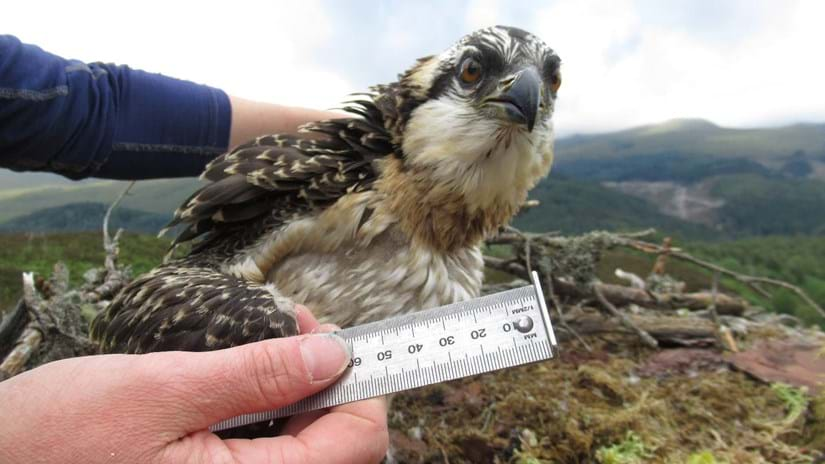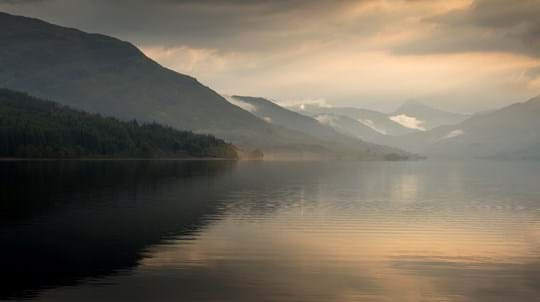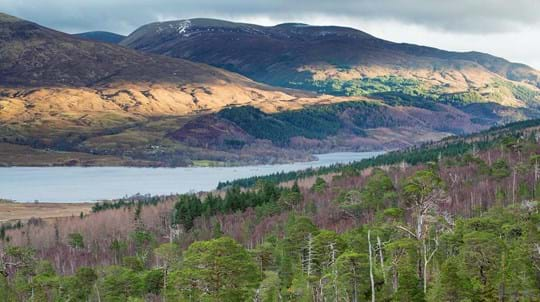
Keeping Loch Arkaig wild
00:02:47
Hard graft. Passionate people. Expertise and skill. There's more to our woods than just trees. See for yourself what makes Loch Arkaig Pine Forest so special, and what it takes to keep it that way.
Watch the filmSpean Bridge

Woodland Trust wood
1,027.31 ha (2,538.48 acres)
NN147877
Explorer NULL
OS Landranger NULL
Loch Arkaig Pine Forest is one of the UK’s last remaining fragments of native Caledonian pinewood. It’s a remote, wet and wild west-coast landscape where freshwater lochs meet mountain and moorland, providing a mix of habitats for iconic plants and wildlife. These include spectacular ‘granny’ pine trees and rare bryophytes (mosses and liverworts) which are characteristic of Scotland’s rainforest.
Loch Arkaig Pine Forest is 1,027 hectares (2,537 acres) in size. It consists of two blocks of native Caledonian pinewood: Glen Mallie and the Gusach (Gaelic for ‘pinewood’), which lie on the south side of Loch Arkaig to the west of Lochaber communities Achnacarry, Bunarkaig and Clunes. The site is not far from Spean Bridge, 16km (10 miles) north of Fort William.
On the A82 Fort William to Inverness road, 1.2km (0.75 miles) north of Spean Bridge, turn onto the B8004 at the Commando Monument. Follow this single track road to Gairlochy for 3.2km (2 miles).
Once you have crossed the Caledonian Canal on a swing bridge, take the next right onto a smaller single track road signposted to Achnacarry. Stay on this road, following the west shore of Loch Lochy for 4.8km (3 miles) until you reach the community of Clunes. At this point the road takes a sharp left-hand bend and leads you along the dark mile – a deeply wooded section of road flanked by walls and trees covered in moss – until you reach a small Forestry Commission car park on your right-hand side.
The public road continues along the north shore of Loch Arkaig for another 24.1km (15 miles) and there are fabulous views across to the Loch Arkaig Pine Forest on the south shore from this road, but bear in mind it is narrow and winding.
From the Forestry Commission car park, you can walk to the Woodland Trust-owned woodland by following the road for 300m then turning left at the head of the loch, past a gateway with stone pillars which says ‘Private Road’ (access on foot or by bicycle only). Continue along a causeway and over a timber-decked bridge. After crossing the bridge, turn right past a green metal barrier. A track then follows the south shore of the loch through the woodland.
As Loch Arkaig is in such a remote location, there are no train stations nearby. The nearest is Banavie, 18.9km (11.8 miles) from the wood.
Visit National Rail for more information.
The nearest bus stop is situated next to the forestry houses on Clunes Road, approximately 2 miles away.
Visit Traveline for more information.
There are no waymarked routes in the wood, but the track on the southern side of Loch Arkaig takes you through enchanting broadleaf woodland with large veteran beech and oak trees on either side, to an old house at Invermaille, once used by shepherds.
This house is managed as a bothy by the Mountain Bothies Association. The more adventurous walker can use this route to access the upper reaches of Glen Mallie and the mountains beyond.
As part of the restoration of Loch Arkaig Pine Forest, non-native trees are being removed from the Glen Mallie Forest between 2021 and 2026. In order to accommodate the transport of the timber, the White Bridge over the River Arkaig and the Glen Mallie track has been upgraded. Non-native trees will be removed from Glen Mallie every year between 2021 and 2026. Non-native trees will be removed from the Gusach every year between 2022 and 2025.
To avoid the bird breeding season, no tree felling will be carried out in any year between 1 April and 31 August. We are working with our neighbouring forest managers to coordinate timber haulage on the road so that the number of lorries is as low as possible in any period.
There will be safety signage in place along the track, please follow the advice and be patient throughout this time.
There is a Forestry Commission (now Foresty and Land Scotland) car park at Chia-Aig Falls, close to the main entrance of the wood.
There are no public toilets nearby.

00:02:47
Hard graft. Passionate people. Expertise and skill. There's more to our woods than just trees. See for yourself what makes Loch Arkaig Pine Forest so special, and what it takes to keep it that way.
Watch the filmWildlife cameras have captured pine marten, badger, red deer, red squirrel and wild boar at Arkaig. We hope to discover evidence of the rare Scottish wildcat in the future. Some of the UK’s most impressive birds of prey - osprey, sea eagle and golden eagle - can be spotted here swooping over the loch. Our live Loch Arkaig osprey cam operates from March to September, revealing a rare and precious insight into the lives of these majestic birds.
The standing deadwood is home to a wide variety of lichens and invertebrates. The azure hawker dragonfly, found only in Scotland, has been recorded in the forest. The rare chequered skipper butterfly, which is confined to this area of Scotland, is also likely to be spotted at Loch Arkaig.

Follow the story of our Loch Arkaig ospreys, live from the heart of an ancient Caledonian pine forest.
Watch our nest camYou’ll find a variety of native tree species in Loch Arkaig Pine Forest, including oak, juniper, hazel, aspen and alder near the loch, through to birch, rowan and then Scots pine at higher altitudes. Rare and localised lichens and mosses cling to the trees throughout the pine forest, including ostrich plume moss and lungwort.
Due to its location of the west coast of Scotland, the ancient Caledonian pinewood at Loch Arkaig experiences high rainfall and relatively mild temperatures. It is part of Scotland’s Atlantic or temperate ‘rainforest’ and is brimming with rare lichens and bryophytes and important wildlife.

We're working to ensure Scotland’s rainforests thrive once again. As part of the Alliance for Scotland’s Rainforest, we're on a mission to protect and enhance this globally important habitat for the special wildlife that depends upon it.
Discover how we're making a differenceWe bought Loch Arkaig in 2016 from Forest Enterprise Scotland under the National Forest Land Scheme.
In close partnership with local charity, Arkaig Community Forest, the Trust launched an appeal in April 2016 to raise £500,000 to fund the purchase, plus a further £4 million to restore the forest. Our appeal was boosted by a £750,000 award from players of People's Postcode Lottery.

This wood was secured for the future thanks to your response to an urgent appeal. Discover how you helped us bring another incredible place safely under our wing, and what the future holds for Loch Arkaig Pine Forest.
See what we've achievedAccording to legend, there is a buried treasure chest in the wood containing gold brought from France to support the Jacobite rebellion of 1745. It is thought to have been destined for Bonnie Prince Charlie, whose allies reputedly hid in the woods, but he fled before the gold reached him. Gold coins found in the forest in 1850 support this tale.
The loch is also believed to have its own kelpie, a water spirit often taking the form of a horse.
Discover our thrilling treasure trail at Loch Arkaig and use the map below to track down hidden chests and impressive artworks. You can print the leaflet at home or grab one on site. Once you've found your first casket, use the embossing press inside to stamp your leaflet and reveal the treasure. The forest is also full of natural riches, from golden leaves to precious petals. What else can you find and place within the caskets for other treasure-seekers to discover?
This trail is approximately 12km (7.5 miles). Please allow four hours if walking or 1.5 hours by bicycle.

Blog
Adam Shaw • 22 Jul 2019

360 tour
Immerse yourself in an interactive Loch Arkaig experience with our virtual tour, including 360 images, maps, video and sound.
External link

Visiting woods
Dogs are welcome for walkies in our woods. Take a look at our tips and guidelines for ensuring we keep our woods safe and special for dogs and wildlife.

Visiting woods
Discover events at our woods and the festivals and fairs you can find us at soon.